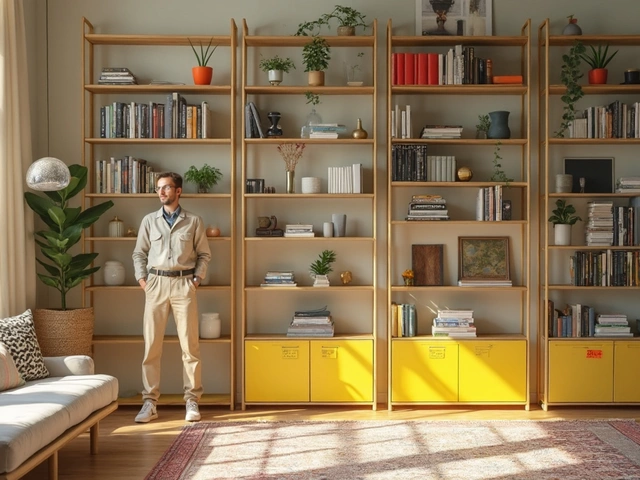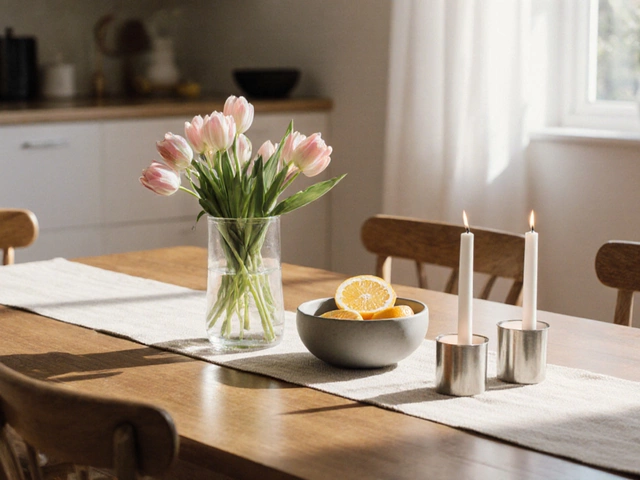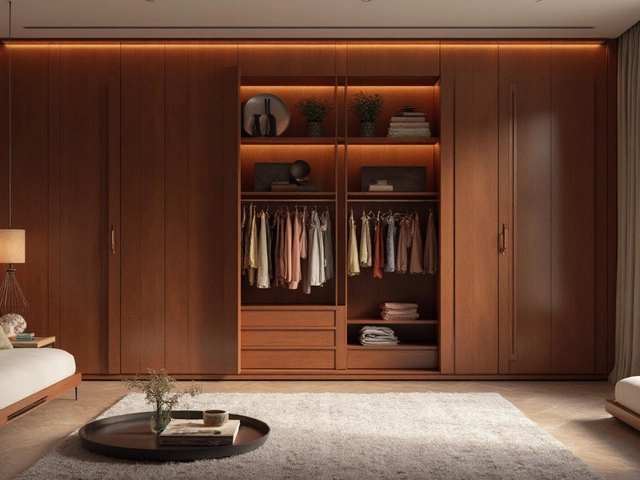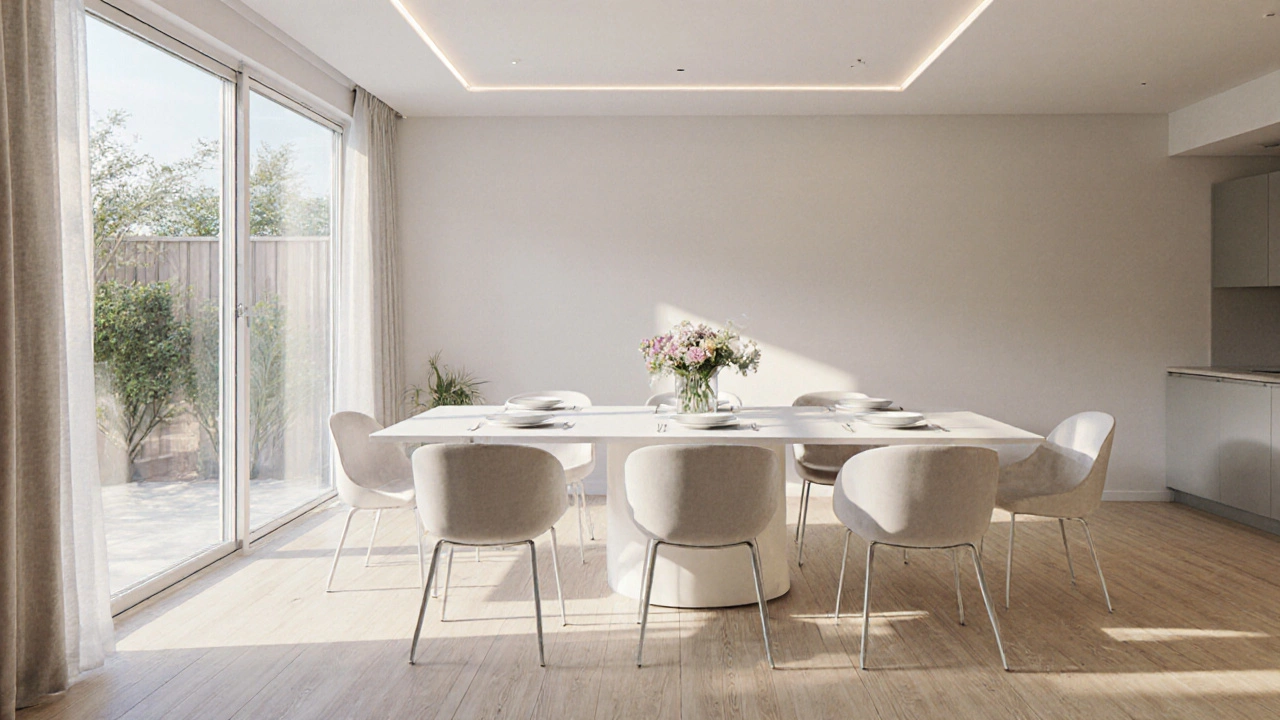
Dining Room Mood Calculator
Assess Your Space
Answer these questions to determine your ideal dining room atmosphere
When planning a Dining Room is the space where families gather to eat, talk, and celebrate, one of the first questions that pops up is the overall lightness of the room. Do you want a bright, airy feel or a cozy, moody vibe? Answering that rolls up a lot of smaller decisions - from paint color to lamp style, from window treatment to the placement of the table.dining room lighting becomes the linchpin that ties everything together.
Key Takeaways
- Light‑filled rooms feel larger and work well for daily meals; dark rooms create intimacy for formal settings.
- Balance natural and artificial sources to avoid harsh shadows.
- Choose a colour scheme that complements the amount of light you get.
- Furniture layout can either amplify or soften the room’s brightness.
- Accent lighting and wall paint are inexpensive ways to shift the mood without a full remodel.
Understanding the Role of Lighting is the combination of natural and artificial light that illuminates a space
There are two main sources:
- Natural Light - Sunlight streaming through windows, doors, or skylights.
- Artificial Light - Ceiling fixtures, wall sconces, table lamps, and LED strips.
In a light dining room, you let the sun do most of the work and supplement it with soft, diffused fixtures. In a dark setting, you rely on warm, directional lights to shape the space.
Choosing a Color Scheme is the palette of wall, floor, and décor colors that defines a room’s visual tone
Color directly affects how we perceive light. Light colours - whites, pale greys, pastel blues - reflect more light, making the room feel bigger. Dark colours - charcoal, navy, deep green - absorb light, creating a tighter, more intimate feel.
Mix‑and‑match is possible. For example, a dark accent wall paired with light‑colored furniture can give you the best of both worlds: a focal point without shrinking the space.
Balancing Natural Light is sunlight that enters through windows or openings and Artificial Light is electric lighting fixtures that supplement or replace daylight
Start by assessing how much daylight the room gets. If you have large windows that face east, you’ll get bright mornings but softer evenings. In that case, keep curtains light and add a dimmable chandelier for nighttime meals.
For rooms with limited windows, use layered lighting:
- Ambient - A central ceiling light or recessed LED for overall illumination.
- Task - A pendant lamp over the table to focus light where you eat.
- Accent - Wall sconces or LED strip behind a shelf to add depth.
Dimming controls are a game‑changer. Switch from bright to low‑key with a single tap, and you instantly shift the room’s mood.
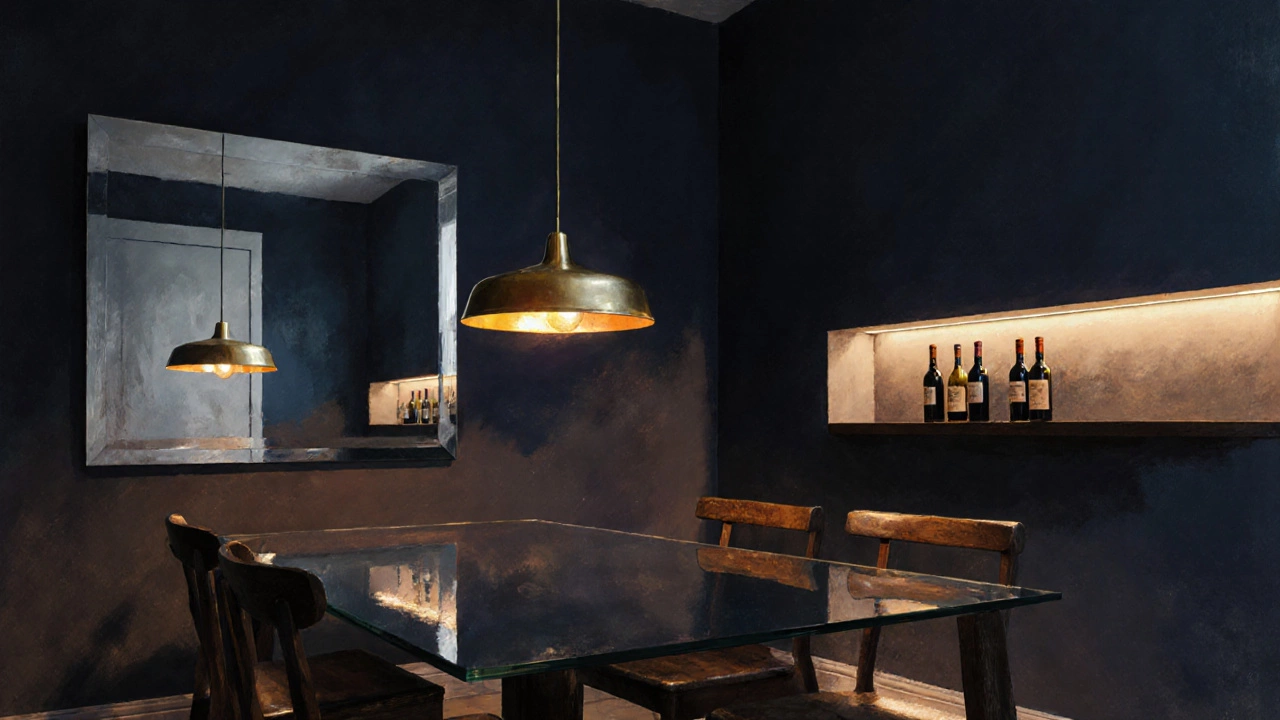
Impact of Mood is the emotional atmosphere felt by occupants on the dining experience
Bright, sunny rooms encourage lively conversation and are perfect for breakfast or casual lunches. Dark, enclosed rooms feel more formal, making them ideal for dinner parties or special occasions.
Think about the typical use of your space. If you host weekly family meals, a lighter vibe keeps things relaxed. If you reserve the room for occasional entertaining, a darker palette can add drama.
How Furniture Layout is the arrangement of tables, chairs, and ancillary pieces in a room influences perceived brightness
Cluttered layouts block sightlines and trap light. Keep pathways clear and space the table away from heavy, dark furniture that can absorb daylight.
Use reflective surfaces - glass tabletops or polished metal legs - to bounce light around. A mirrored wall behind the table can double the perceived brightness without any extra bulbs.
Design Details: Wall Paint is the coating applied to interior walls that determines colour and finish and Accent Lighting is targeted light sources that highlight specific features
Choosing the right finish matters. Matte paint absorbs light, perfect for dark rooms. Satin or semi‑gloss reflects a bit more, helping light rooms stay bright.
Accent lighting can turn a simple wall into a statement. A narrow LED bar above a wine rack or a directional spot on a piece of art adds depth without overwhelming the overall scheme.
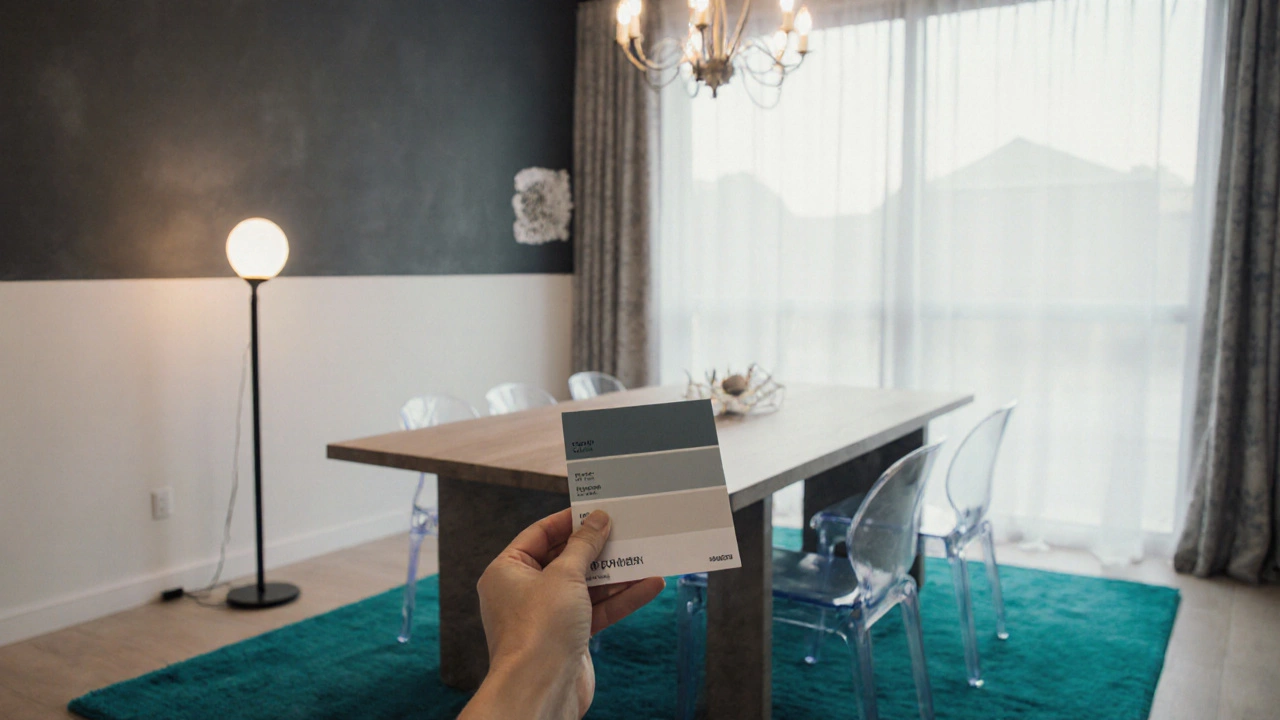
Light vs Dark: Quick Comparison
| Aspect | Light Dining Room | Dark Dining Room |
|---|---|---|
| Perceived Size | Feels larger, airy | Feels cozier, more intimate |
| Best Lighting | Abundant natural light, minimal fixtures | Layered ambient + accent lighting |
| Color Palette | Pale neutrals, soft pastels | Deep hues, rich pigments |
| Typical Use | Everyday meals, family gatherings | Formal dinners, special events |
| Key Challenges | Preventing glare, keeping space from feeling sterile | Avoiding a cave‑like feel, ensuring adequate illumination |
Practical Steps to Choose the Right Tone
- Assess daylight: Measure how many hours of direct sun the room gets.
- Define purpose: List the primary activities - daily meals, entertaining, or both.
- Select a base colour: Pick a light or dark hue that matches your purpose.
- Plan lighting layers: Decide on fixture types and where dimmers will go.
- Test with samples: Paint a small wall section and temporarily install a lamp to see the effect.
- Adjust furniture: Choose pieces that reflect or absorb light as needed.
- Finalize accents: Add artwork, rugs, or plants that complement the chosen tone.
Following this checklist keeps you from over‑committing to a look that later feels wrong.
Common Pitfalls and How to Avoid Them
- Too much dark paint in a windowless room - Counter with multiple light sources and reflective surfaces.
- Overloading a bright room with white walls - Add a bold piece of furniture or a colourful rug to give it character.
- Ignoring dimmers - Fixed‑intensity lighting can make a bright room feel harsh at night.
- Choosing fixtures that clash with the colour scheme - Stick to metal finishes that echo your palette (brass for warm tones, black for modern dark).
Next Steps for Your Dining Room Project
Grab a paint swatch, tape a corner of your wall, and set a lamp on the table. Live with the combo for a day - see how it feels at sunrise, midday, and after dinner. If it still feels off, tweak one element at a time. Small changes add up, and you’ll land on the perfect balance between light and dark.
Can I mix light and dark elements in the same dining room?
Absolutely. Pair a dark accent wall with light‑colored chairs or a bright rug. The contrast adds visual interest while keeping the space balanced.
What type of bulbs work best for a dark dining room?
Warm‑white LED bulbs (2700‑3000K) create a cozy glow without harsh glare. Pair them with a dimmer for flexibility.
How much natural light is enough?
If you can see the entire room without turning on a light during daytime, you’ve got sufficient natural light. Otherwise, add a tall floor lamp or a chandelier.
Should I paint the ceiling a different colour?
A light‑coloured ceiling reflects light upward, making the room feel higher. In a dark dining room, a subtle off‑white ceiling can prevent the space from feeling too cramped.
Is a rug necessary for lighting balance?
A rug adds texture and can be a colour anchor. Choose a lighter shade for a dark room to bounce some light, or a darker shade for a bright room to ground the space.

